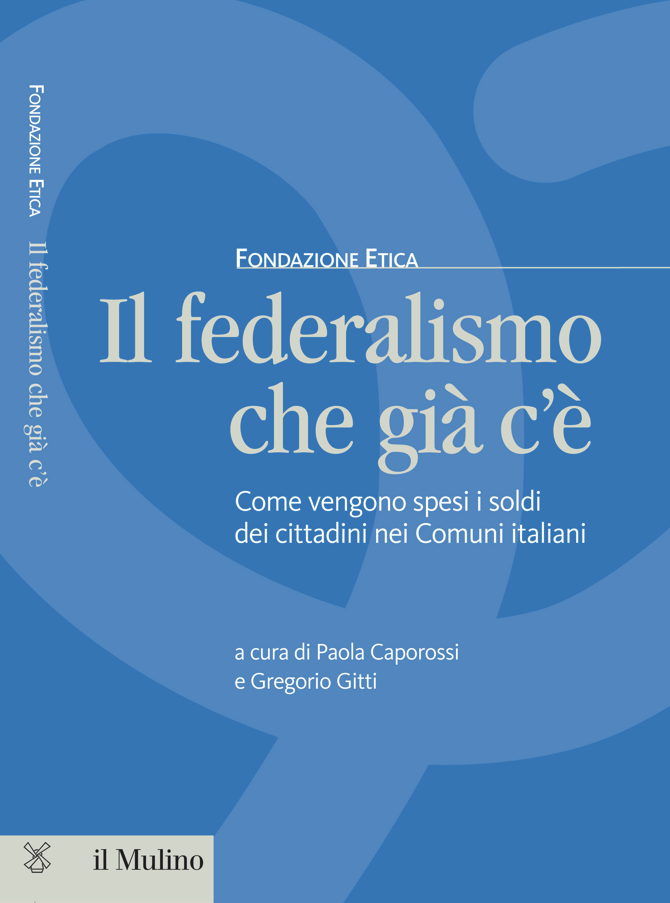
by Giovanni Vetritto
Director General Presidency of the Council of Ministers
I am grateful to Fondazione Etica who deemed it worthy of republishing, in relation to some highly topical circumstances, my 2014 conference speech, once published by Eticapa, an online magazine animated by executives and public officials who are still thoughtful and responsible with respect to the dysfunctional drift of the public administration as a whole.
In that conference we talked about spending reviews, standards for the revision of the accounting discipline and profitability of spending. Regularly confusing, as happens constantly in the speeches of certain politicians, what the administration "costs" and what the administration "spends".
Forerunner of this confusion is a volume of overwhelming success by Sergio Rizzo and Gian Antonio Stella from several years ago; volume in the basic thesis that can also be shared as a denunciation, but full of implausible comparisons and real errors. In one passage of the volume, the "costs" of Palazzo Chigi and n. 10 Downing Street; obviously without considering that the Italian Presidency of the Council "spends", as it is responsible for direct services to citizens, a great many resources which in Great Britain are the prerogative of central agencies or local governments: from civil protection, with all its scientific and of operating rooms, to the various extraordinary plans for the increase in nursery schools in the last decade.
An erroneous approach to the problem has obviously made bankruptcy by now at least three or four experiences of Commissioners at the spending reviews, personally also capable and motivated. But one cannot be surprised at the failure of their experience if in the meantime it is deemed appropriate to place a legal ceiling on expenses for the technological modernization of administrations in the midst of the digital revolution, to block for decades the turnover of the staff aging knowledge and skills of the employees, chasing for weeks the ghost of blue cars that practically no longer exist in Rome.
If we want to rebalance the balance in favor of what the administration "spends" by lightening the items of what the administration "costs" we need a courageous organizational review, which inevitably implies an initial investment; each operation of downsizing company requires such a step to have savings fully operational. The innovation of the public machine passes through the abandonment of a nineteenth-century organizational model and a decisive entry into the third millennium of multilevel digital governance; which in turn postulates a rejuvenation of the personnel (and in particular of the management).
Instead, it was preferred for several legislatures to embrace an awl policy which has not significantly reduced either the overall item of public expenditure or (what is even worse) the relationship between what the administration "costs" and what it "spends".
And again, with Italy now good last in Europe for the number of civil servants (both as a percentage of the active workforce and for the number of citizens served by each bureaucrat) one is surprised at the poor performance of the offices, one calls for purges of legions of employees who in reality do not exist, tales of costly reforms financed by the elimination of an "unproductive expenditure" which no Minister or Commissioner, having arrived in the Government, ever finds; for the trivial reason that in reality there is none, or at least there is, and not a little, only in the face of how the administration could work if one had the courage to reviews organizational and not purely financial. However, that would require skills, political vision, modernity of knowledge, anti-deologism which are now fearfully scarce in the party class. Proof of this is that every new Minister, after taking office, regularly ends up asking for more personnel, better equipment, more adequate staff, all things expressly prohibited by norms approved almost unanimously in Parliament and which have the sole effect of preventing any real institutional modernization work.
It is these days, then, the news of an Italy for the first time last for the use of European structural funds in the history of this policy; re-reading yourself four years later and verifying that you have intuited everything and sounded the alarm when it was still possible to intervene (as anyone who has the patience to continue these pages will see) is of no consolation or gratification for an administrative professional. It's just a source of bitterness.

When it comes to public expenditure, it is necessary to distinguish the two different concepts of "cost" and "expenditure": what an Administration "costs", a voice, alas very rigid, which derives from the way in which the administration is organized and in which, consequently, the resources are allocated; while what the administration "spends" ultimately represents the reality of public policies.
Action is generally taken – above all in the agitated phases in which the public budget goes under stress, for example for international speculation – only on the "expenditure" factor, because the "cost" factor of the overall organization is always rigid and impossible to maneuver in an emergency. Hence the real point of a public spending review program: the reorganization of offices.
But how should we reorganize the administration? I grew up on the pages of a book that I continue to consider not only of extraordinary importance (in my opinion it should be an exam text for anyone who wants to become a bureaucrat, and perhaps even a parliamentarian), but also as beautiful as a novel. It is a book by Guido Melis, from 1988, on the "two models" of public administration between the Giolitti age and fascism. In that book Guido Melis tells us about the conflict between two different ideas of the organization of the Public Administration, shared by distinct groups of politicians and senior bureaucrats in a precise phase of the history of Italy; two different ideas which were not politically neutral, but in turn depended on very specific ideas on the economy, on society, ultimately on the country. And he tells us how the model of those who were then the innovators (the "desk Taylorists"), aware that it was no longer the time of organized administration like the Prussian army, but of an organized administration like the Fordist enterprise (which was the great qualitative leap in the efficiency of the large organizations of the second industrial revolution), won in a certain handful of entities, of administrations separate from the state; but lost in ministerial administration.
We still have central ministerial administration organized like the Prussian army; and we run the risk, if we don't study enough, of falling in love with organizational ideas that only danced for one summer.
I am thinking of the rigid idea that everything can be controlled through a breakdown of ministries into "single-product" agencies, which was the model of new public management; it is a crude idea, which even for some years has triumphed in international literature; but which today in those same international literature reviews is considered completely outdated. I'm quoting just one article from a couple of years ago, which claims "new public management is dead”, the new public management is dead; today is the time of multilevel public governance a strong technological content, which is quite another thing, requires other flexibility, requires the adoption of flexible post-Fordist organizational models.
A new organizational paradigm for the public sector which, therefore, forces us to take on a challenge that is extremely difficult for an ontological reason: our Public Administrations do not have the minimum of organizational maturity and, if we do not make the leap in organizational quality, we will not succeed never to intervene on how much the administration costs, so we should increasingly cut back on how much it spends, sacrificing policies.
But on this we are living years in which, once again, bureaucracy is not a monolith, but is divided between innovators, who carry forward a new idea of administration, and conservatives.
How, then, to intervene, to push the administration to choose among the possible organizational models, resolving the internal conflict between innovators and conservatives? You need politics.
Whoever speaks to you has always referred to a liberal-socialist and Gobetti cultural trend, whose major exponents knew how to exploit the ability and coherence of the best Italian political culture and the best organizational science, around some representatives of the Italian political class and who, from the phases of analysis of the bureaucratic problem in the pages of Salvemini's "L'Unità" to the efforts of Francesco Saverio Nitti, up to the last great exponent of this culture who was probably Ugo La Malfa, has always had an particular to the supervision that, also through Parliament, politics must have with respect to the administration's ability to respond organizationally in the implementation of the democratically decided design. Nothing visible today.
Let's re-read the discussion on the impeachment of Minister Trabucchi in the 1960s, in relation to the Brazilian tobacco scandal; and in particular the intervention of Ugo La Malfa, who asked "with pain" (his words), the impeachment of this Minister, of whom he was personally a friend. Go and look at the organizational observations that La Malfa makes on how it was the organizational model of the autonomous company that allowed a certain type of political mixing in technical decisions.
Today we are in a condition in which, in year "one" of a decisive seven-year period of European planning, the Parliament does not enter into the organizational issues of the Public Administration; considers it normal that, more than 6 months after the approval of a law that totally redefined the organization of the Italian cohesion structures (which must take care of the use of the only 100 billion that we will have available over the next 7 years to avoid the collapse of this country) the consequent organizational acts have not been adopted; so much so that in June of this year we still don't know what the Presidency structure will look like, which must perform the "high" functions of European Fund programming, what the Agency will be like, which will have to implement the implementing projects; but on the other hand a call has been made to choose the President of an Agency that no one yet knows what he is, because to date there is no public formulation, not even the subject of discussion, on the organizational regulation of that Agency.
It's not even clear what the agency will do compared to the many public project companies that already exist. Invitalia, Formez, Studiare Sviluppo, Italia Lavoro, ISFOL, Promoovitalia, on European funds we have a quantity of joint stock companies in public command (as Massimo Severo Giannini called them), which is no longer sustainable; it's not just Invitalia, but it's her plus all the others, two, three, four, five. It is time for Parliament to verify how the Directors General who "house” give these resources to these very expensive structures. And what do they know how to do: planning, European or national, must come from general management, it cannot come from companies house, but today the opposite is happening, due to the bad choice of those responsible for ministerial commissioning.
These things Parliament cannot fail to control, because this is what the administration costs. On average, the Formez takes the 40%, the 50% of the resources of the reference Ministry, because that 40% is what the Formez costs (and it costs more than a Ministry, but works worse); only then with the other 40-50% it takes the three young graduates, who are sent to the Ministries of reference to really write the programs (and which the administration itself cannot choose due to some bizarre organizational rule that is apparently draconian but in fact wicked ).
This is the reality of the Administration, it cannot be expected that a Government can operate in the matter without the control of Parliament.
[…]
the Public Administration is a social subsystem, not an executive train, it cannot function regardless of the political system, you need to have an idea of which political direction you are going in to be able to make it work, and any dialectic between Government and Parliament can help keep the system organizational bar.
I, who belong to the last generation that has really studied Keynes, instead of hypostatizing him to make him the enemy and the origin of all evils, say that the very point of the planning of financial resources demonstrates that we cannot go on like this; because programming is not a dirty word, it is not crypto-communism, it is the rule of the European Funds which - coincidentally - we spend badly, but better than any other Fund that exists in this country. Because, when we say that we don't use European funds well, we forget how we spend national money (those from CIPE resolutions, for example): or even worse (there is still money from 1990s resolutions around).
We spend European money almost well, in the sense that we spend it very badly, but we spend any other national resource much worse.
This is the crux of the problem of public spending and the spending review, which must above all be an organizational review.
We are with the administration in organizational bankruptcy, politics must put its head back on the administration and make it a big issue that is discussed in Parliament and with Parliament.
[…]
These are the questions, outside of this we go into pure rhetoric, with which we will continue with an administration that costs too much and for this very reason is forced to spend less and less.
June 27, 2014



